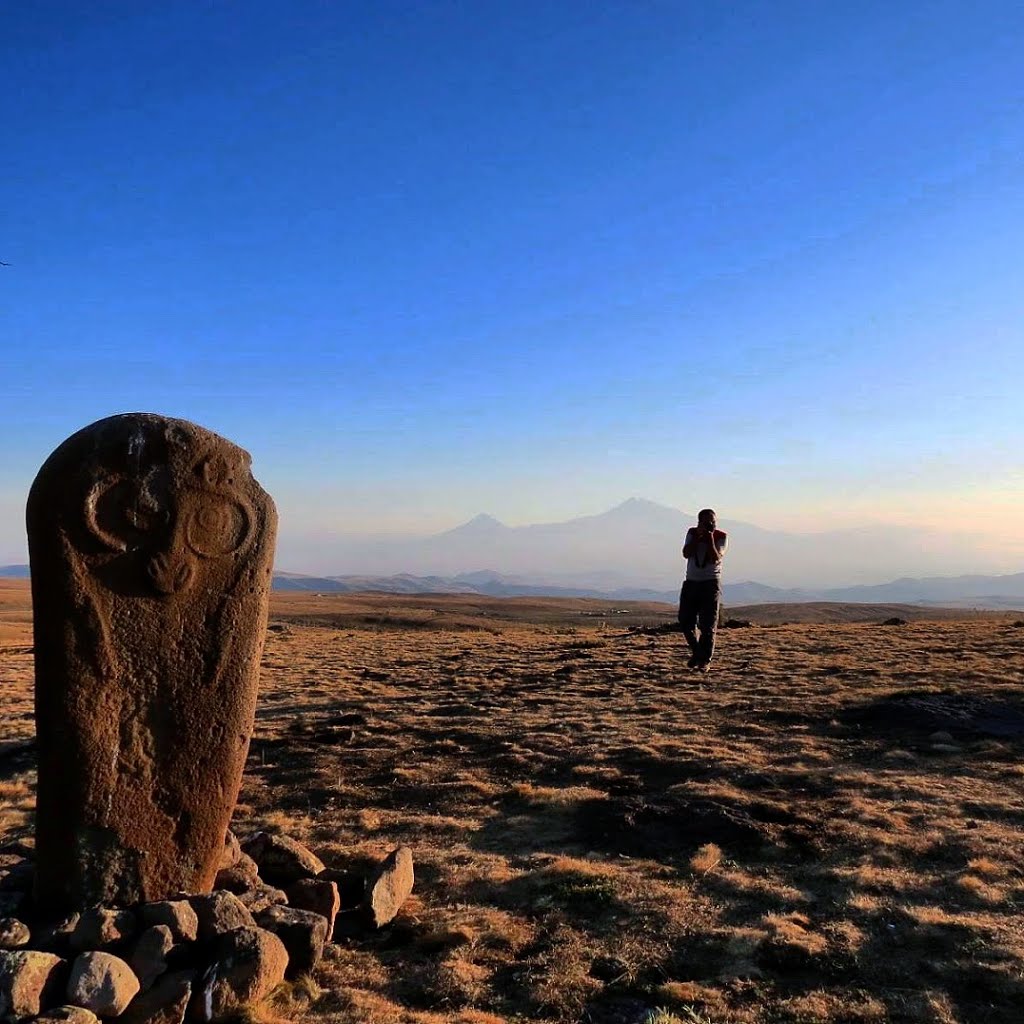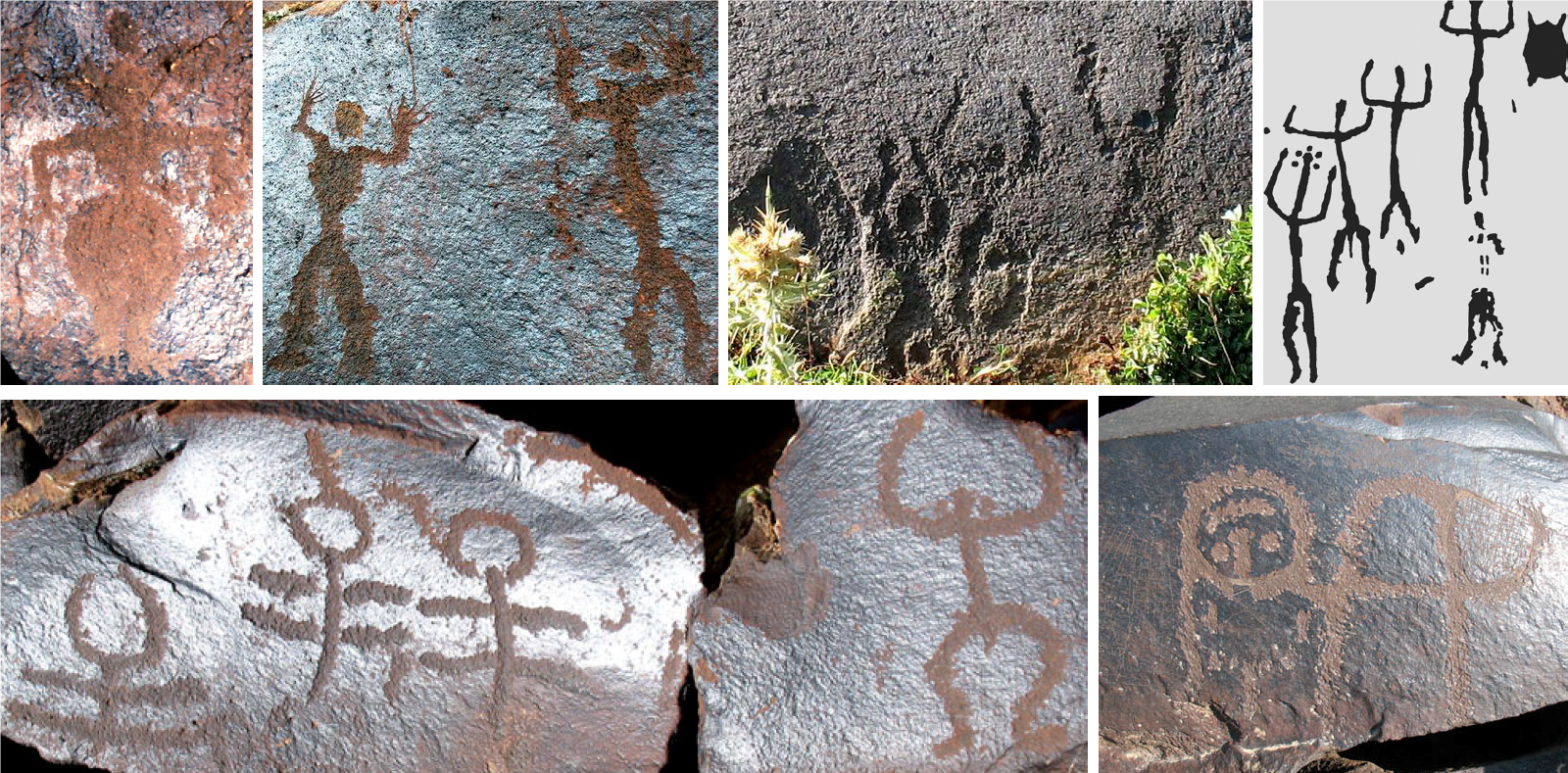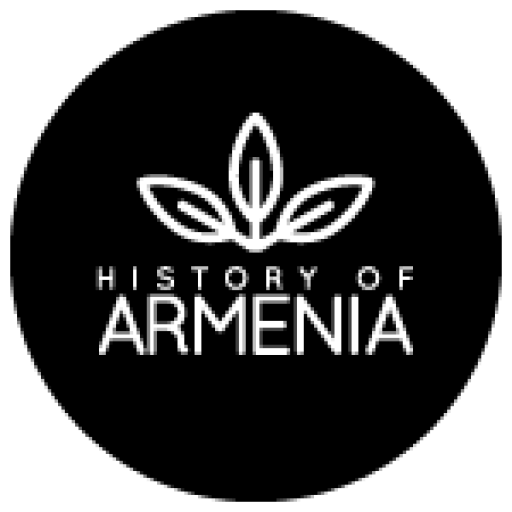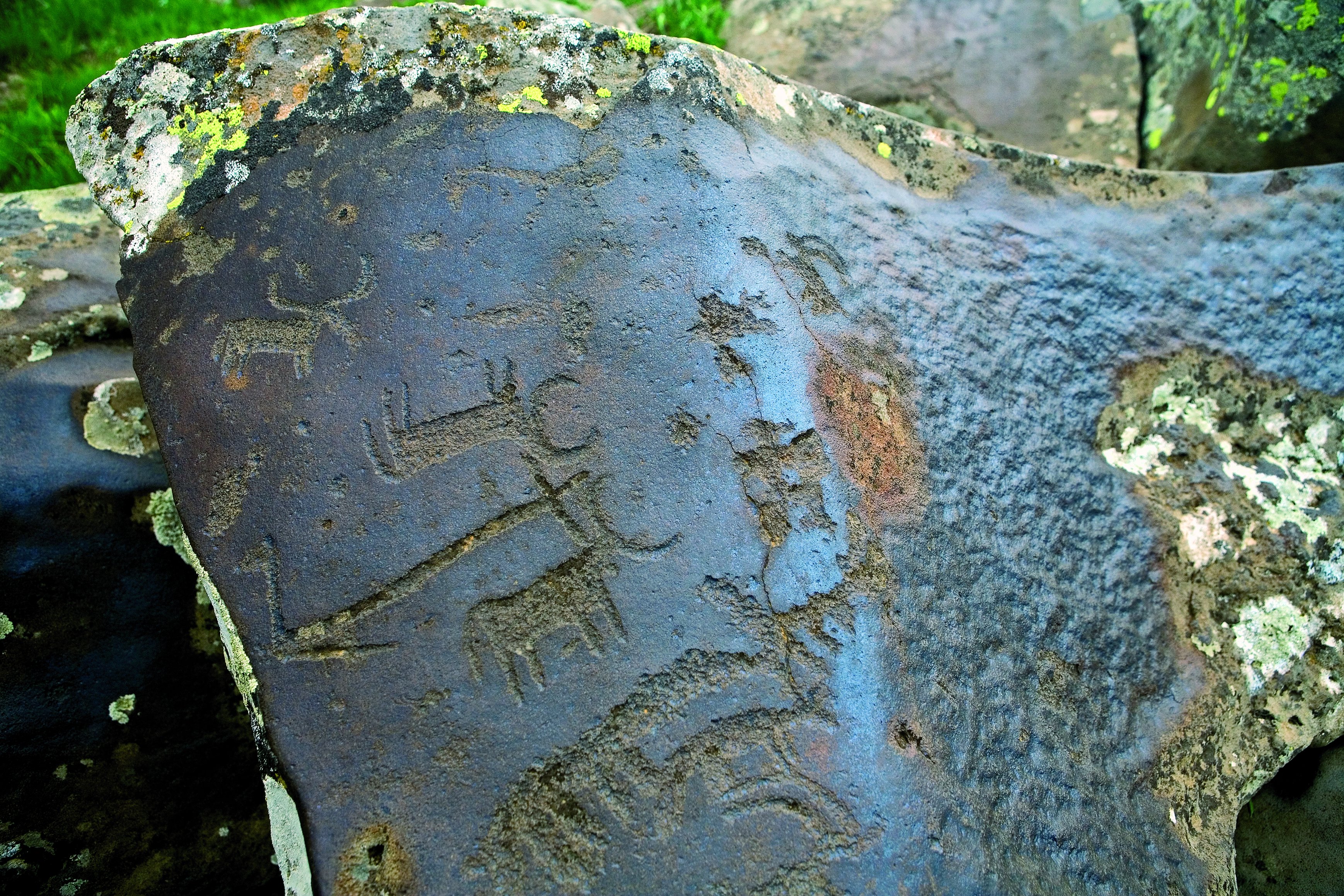Findings of rock carvings in Armenia show that the creation of rock-art in Armenia began in the Neolithic period, reaching its peak during the Bronze Age. In 2015. a paper, written by Tokhatyan K.S., who’s a researcher at the Institute of History of National Academy of Science of Armenia, translated from Armenian by G. D Vardumyan, was published regarding Rock-art in Armenia.
According to Tokhatyan the rock-carvings are of great cognitive value as a cultural source, as it reveals the historical realities of the peoples that lived in the Armenian Highlands between the 7th – 1st millennium BC. It helps us determine the origins of the Armenian people and its demographic processes. The carvings serve as a form of communication as it was used to record, store and convey information.
High Mountain Sites
The largest parts of the ancient etched petroglyphs are located at altitudes of 3.300 meters above sea level. However, petroglyphs have also been preserved at the foothills of mountains and in valleys. The ancients of Armenia have created huge galleries, mountain sanctuaries consisting of tens of thousands of drawings.
Nearby locations where petroglyphs are found, researchers also discovered dragon stones (vishapakar), summer open-air sites, caves, huge cromlechs, and other types of monuments. This indicates that petroglyphs are not an isolated phenomena of high mountain areas, but that they were also part of the historical and cultural environment, formed as a result of vigorous human activity.

The Content Of Rock-Art In Armenia
Armenian Rock Art can be divided into different thematic groups such as depicted below:
- Static elements of environment: mountains, volcanos, rivers, lakes, springs
- Natural phenomena: lightning, clouds, rain, rainbow
- The heavenly luminaries: sun, moon, stars, stellar group, constellations
- The earth & rare celestial phenomena’s: eclipses, meteors, and comets
- Flora and fauna: bezoar, mouflons, deer, gazelles, horses, bulls, tours, bison, wild boars, bears, leopards, cheetahs, lions, wolfs, dogs, foxes, snakes, and birds
- Life and activities of men: hunting, fighting, husbandry, animal domestication, land cultivation and plowing
- Ceremonial life and rituals: the worship of motherhood, ancestors, deities, heroes, twins, good spirits, fertility, and time
- Sports and competition
- Playing games and dancing
- Weapons
- Tools and accessories: bow and arrow quivers, shields, spears, maces, batons, hooks, lassos, plow, a network, a ladder
- Vehicles and transportation: carts, chariots, boats, skiing, sleighs
- Scientific thought (if you can call it as such): sky maps, calendars, compasses, and in the plans of surroundings and irrigation systems
- Drawings of buildings: settlements and shelters

Furthermore, according to Tokhatyan, in some carvings, there is a variety of patterns, symbols, including signs, similar to the letters of the Armenian and other ancient alphabets. Some of these signs are almost in the same shape and meaning and were used in the medieval Armenian ideogram system.
Tokhatyan also asserts that some of the above mentioned thematic groups, such as star charts, letterlike signs, dragons, calendars are either absent in other parts of the world or are rarely found. He also continues to note an important difference regarding petroglyphs found in Armenia and elsewhere. According to Tokhatyan, Armenian petroglyphs differ from the others because violent scenes in carvings appear to be completely absent. Apparently, as a result of a taboo on such images, they were not carved on rocks by the ancients.
Written by
Hovik Torkomyan, B Comn
Founder History Of Armenia

